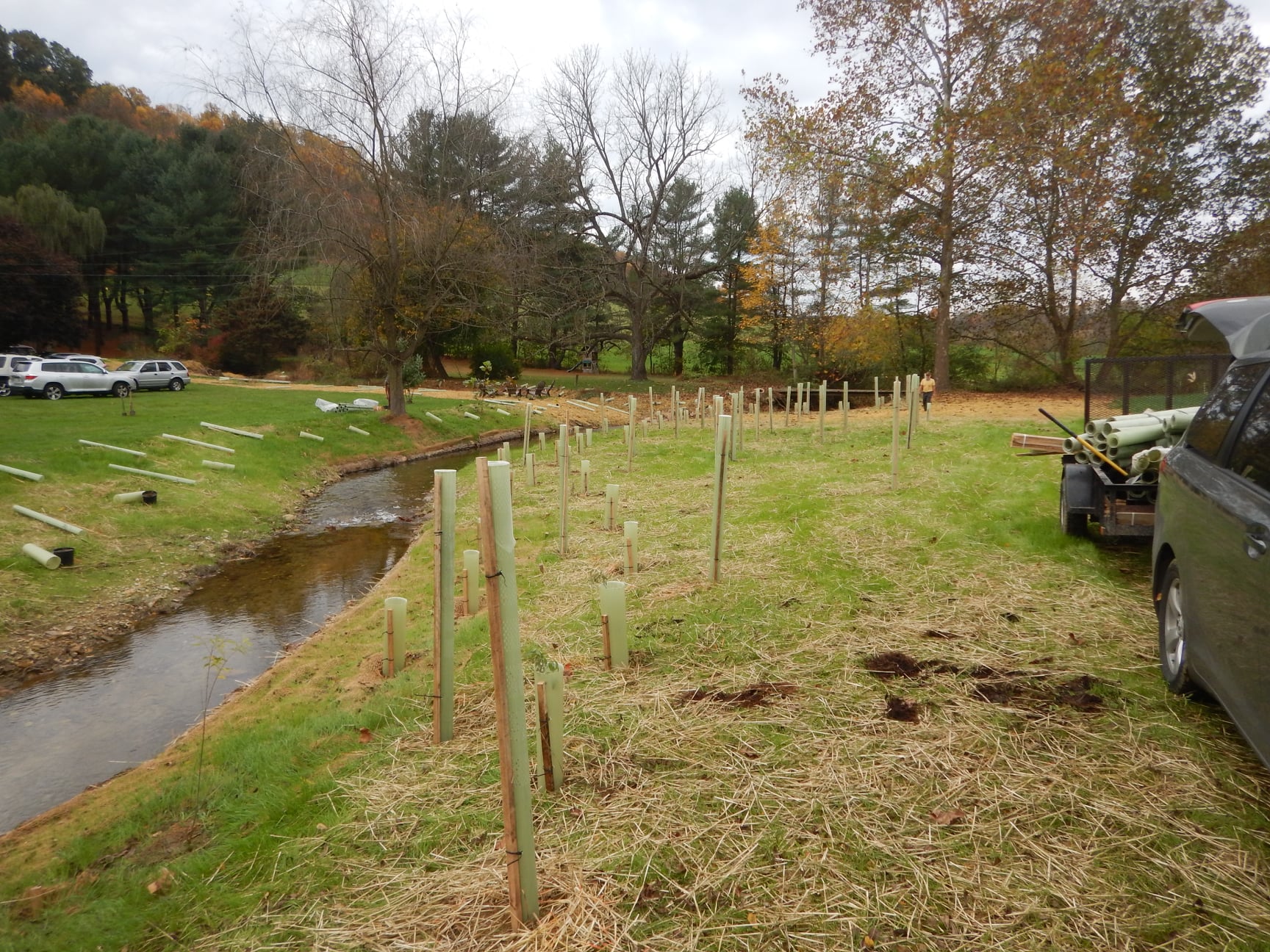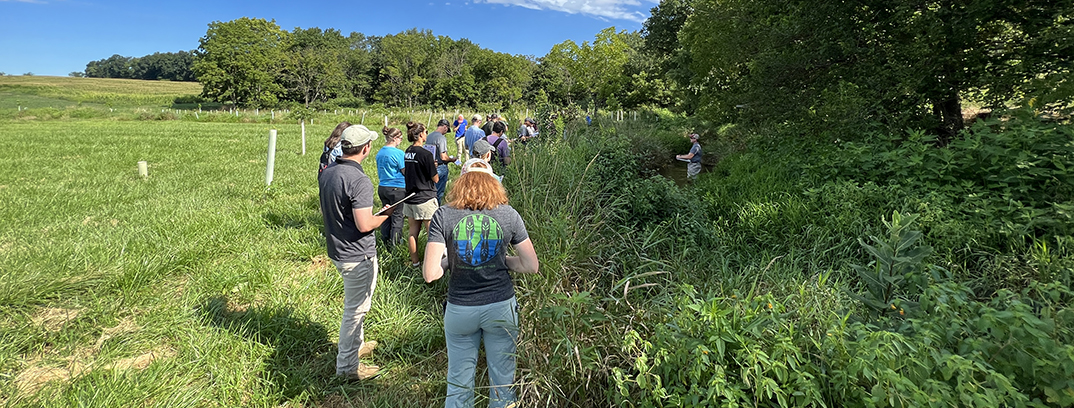Climbers Run Stream Restoration

The owners of the House at Climbers Run, a retreat center and rental space, used to dread heavy rain because it meant that the stream on their property would flood, causing significant land erosion, safety concerns, and increased pollution. Because the property is in a valley, the water could rise four- to five-feet in a single rainfall. The owners recall watching their land “eaten away” during these events. But in summer 2019, Donegal Trout Unlimited (DTU) offered a solution – stream restoration and riparian buffer plantings to strengthen the streambanks, reduce erosion, and provide a lush forested area with clean water for their guests.
DTU came to the Lancaster Clean Water Partners with the idea for the stream restoration and riparian buffer planting along Climbers Run. This DTU project supports their mission to help landowners and farmers to protect, reconnect, restore, and sustain cold water fisheries and our watersheds in Lancaster County. The project also reduces streambank erosion and connects four contiguous projects along the stream in the Pequea Creek Watershed in southern Lancaster County.
With dollars from the Lancaster County Community Foundation’s Clean Water Fund, the Partners were able to grant DTU enough support to restore 1,530 linear feet of stream and plant 2.45 acres of riparian buffers.
Restoring the stream and planting native trees and shrubs has already proved successful, with the property owners reporting less flooding during heavy rain and loss of land along the stream. Now guests, and in particular the families with children, who stay at the House at Climbers Run can enjoy a lush, green space that is safe to be in the water and perfect to reconnect with nature. And the property owners are comforted that the streambanks will remain in place so they can continue to share “the magic that is living in the country” with their guests.
Quickly seeing the water quality improvements, neighboring landowners came to DTU to discuss improvements on their own properties. One neighbor paid for the implementation practices out of her own pocket with buffer assistance from DTU. A neighboring farmer who owns land upstream on the main stem authorized improvements as well, including buffers. The improvements were completed and paid for by DTU.
“It took us seven years and three different landowners to finally get permission and then finally complete the work on Climbers main stem,” says Bob Kutz, DTU Conservation Committee Chair. “The Clares are wonderful people, and we enjoyed working with them. Recently, author and conservationist Keith Williams did some scuba work in the main stem of Climbers Run. He smiled the whole time about the reproducing, healthy brook trout he found. There is some work left to do on the tributaries, but at this point, the waterway is a restored stream.”
The project addresses the following CAP priorities:
- Round Manure Storage – 10’x68’
- Reception Pit – 12’x84’x8’
- Barnyard Concrete Heavy Use Area – 3,790 sq. ft.
- Roofed Concrete Heavy Use Area – 32’x60’
- Roofed Stacking Structure – 32’ x 44’
- Animal Walkway – 800 sq. ft.
- Access Road Surfacing – 17,040 sq. ft.
- Feed Storage Pad Surfacing – 10,900 sq. ft.
- Roof Gutters – 166 ft.
- Stream Bank Fence – 1,840 ft.
- Slatted Crossing – 2 at 240 sq. ft.
- Slatted Water Access – 1 at 192 sq. ft.
- Reinforced Gravel Approached – 576 sq. ft.
- Buffer Planting – 77 trees and tubes covering 24,350 sq. f t.
- Seeding and Mulching – 0.52 acres
Expected reductions include the following:
- 5,625 lbs of reduced nitrogen per year
- 2,562 lbs of reduced phosphorus per year
- 2.9 tons of reduced sediment per year




















